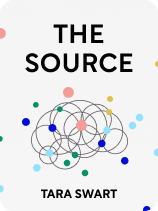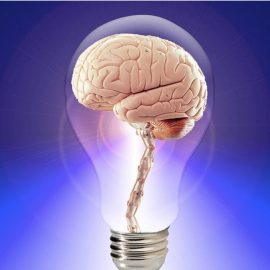

This article is an excerpt from the Shortform book guide to "The Source" by Tara Swart. Shortform has the world's best summaries and analyses of books you should be reading.
Like this article? Sign up for a free trial here.
How can you make your brain more agile? What are the six modes of thinking, according to Tara Swart?
To get the most out of your brain functioning, you have to improve brain agility: the ability to focus closely on one thing at a time, consider a problem from many different angles, and synthesize ideas from multiple modes of thinking. In The Source, Swart describes six modes of thinking that together comprise what she calls a whole-brain approach.
Learn more about the six modes of thinking and how you can tap into all of them.
How to Make Your Brain More Agile
According to Swart, the six modes of thinking are emotional intelligence, motivation, physical attunement, intuition, logic, and creativity.
These modes of thinking are interdependent and influence each other. Swart explains that most people predominantly use two or three of these, and they often consider themselves “bad” at the ones they don’t use as much. But she argues that anyone can hone all six of these modes and develop their brain agility, thus making the best use of their whole brain.
| Comparing the Six Modes of Thinking to Taylor’s Four Characters Swart appears to use the “whole” in “whole-brain approach” to refer abstractly to these modes of thinking, but in Whole Brain Living, neuroanatomist Jill Bolte Taylor uses the term to refer more literally to physical regions of the brain working together as a whole. She suggests that the left hemisphere of your brain is largely responsible for organized thinking like logic, while the right hemisphere is responsible for more creative thinking. She also identifies the limbic system as being responsible for emotions and the cerebral cortex as the seat of higher-level cognitive functions. She uses these distinctions to identify four major types of thinking, which she refers to as characters, that are associated with the four brain areas. These characters don’t match up cleanly with any of Swart’s six modes of thinking, but like Swart, Taylor suggests that we often let one of these characters dominate over the others in guiding our thinking and personalities, and she argues that we should strive to use all of them more equally. While Swart offers specific exercises for strengthening the modes of thinking you use less, Taylor recommends a single mindfulness technique to get your four characters into greater balance with each other: the BRAIN technique. To apply this technique, you 1) breathe deeply for 90 seconds, 2) recognize which of your characters is currently in the lead, 3) appreciate all your characters, 4) inquire about each character’s perspective, and finally 5) navigate and identify the best decision based on your whole-brain thinking. |
First Mode of Thinking: Emotional Intelligence
According to Swart, the most important mode of thinking to strengthen is emotional intelligence because it’s fundamental to all the other functions of the brain, so it has the strongest effect on the other five modes of thinking. It’s also the mode that people tend to have the hardest time with, because society tends to paint emotions and logic as polar opposites, suggesting that emotions are bad and logic is good.
Because emotions come from the limbic system, which is one of the most primal parts of the brain, we often feel ruled by our emotions. But Swart explains that we can control our emotions and use them to our advantage in maximizing our brain’s potential. Specifically, while we may not be able to determine what emotions we feel at any given moment, we can control our emotional response to anything.
Second Mode of Thinking: Motivation
The second mode of thinking Swart describes is motivation, and it’s closely tied to emotional intelligence. Motivation helps drive us forward when things get difficult, so learning to tap into it will ensure that you’ll have the resilience to keep progressing no matter what challenges you face.
Your motivation often comes directly from your emotions. Swart says that survival emotions are negative motivators, while attachment emotions act as positive motivators. You can use both positive and negative motivators to help you move forward: For example, if your goal is to earn a promotion at work, you might be motivated both by the excitement of taking on a new role (positive motivator) and the fear of not having enough money to get by in your current position (negative motivator).
However, cautions Swart, be careful not to rely too much on negative motivators, which can override your positive motivators and cause you to self-destruct: If your fear of having too little money in your current job becomes your sole motivator, you might become so anxious that your work performance suffers, leading you to be passed over for the promotion. When you begin to feel like negative emotions are weighing you down rather than propelling you, you need to challenge them.
Swart writes that you can challenge your negative motivators by reframing them through a different perspective. Take a step back from the problems that are motivating you and consider them through a wider lens. While your problems are valid and meaningful, remember that everyone in the world faces difficult situations, and there will always be people whose situations are worse than yours. Think about how your problem will feel five years from now: Chances are good it won’t matter anymore. These practices help depersonalize your problems so they have less sway over you and your motivation.
Third Mode of Thinking: Physical Attunement
Another mode of thinking that Swart describes is being attuned to your physical body and senses, which helps you strengthen the connection between your mind and your body. This involves a specific type of sense called interoception, which is the sense related to perceiving the internal workings of your body. Interoception tells you when you’re hungry, tired, too hot, or need to go to the bathroom, among other things. Because emotional responses have a strong impact on the body, being out of touch with your emotions can interfere with your interoception. Thus, when children grow up being told to “get over” what they’re feeling, they often lose touch with their physical bodies and have trouble with interoception.
Sart says that improving your physical awareness and interoception requires you to make a conscious effort to get in touch with how your body feels in response to different situations. She recommends keeping a daily journal in which you record 1) what you eat, 2) how you feel, and 3) how many times you move your bowels. This helps you make the connection between your body’s functions and your mood. She also recommends practicing a body scan, which is a meditative activity in which you focus your attention on each part of your body from the bottom up while breathing deeply.
(Shortform note: Issues with interoception are known as interoceptive dysfunction, and they’re often found in people with ADHD, autism, and mental disorders like depression, as well as people with trauma-related conditions. This dysfunction can make it difficult for people to regulate other modes of thinking like emotion and motivation, and it can also contribute to other conditions such as eating disorders. As with the other modes of thinking, Swart’s tips (such as body scanning and journaling) may be useful to some degree, but people with interoceptive dysfunction may need other assistance to improve their interoception, or they may need others to help them manage and accommodate their conditions.)
Fourth Mode of Thinking: Intuition
Next, Swart discusses intuition, which is closely related to physical attunement. We often refer to intuition as “trusting your gut,” and while this may seem metaphorical, research shows that the gastrointestinal and digestive systems actually have a direct impact on our brain’s functioning. Evidence suggests that a healthy microbiome has a positive effect on mood and reduces negative thinking. Additionally, 90% of the serotonin (the “happy” hormone) in our bodies is produced in the gut, further linking gut health with mood.
(Shortform note: Other research suggests that the gut is responsible for producing as much as 95% of the body’s serotonin, further supporting Swart’s assertion that mood is heavily dependent on gut health. Also, research on drugs that affect serotonin suggests that this relationship may be reciprocal, and that medications like fluoxetine and other antidepressants that target serotonin can directly impact your microbiome and gut health.)
Swart says that maintaining a healthy gut enables good intuition, which leads to better decision-making. To improve your gut health, she recommends you exercise regularly and maintain a healthy diet like the one we described earlier in the “Fueling the Changing Brain” section. Additionally, she says that managing stress well is essential to a healthy gut—chronic stress reduces the amount of energy the body is able to expend for digestion, leading to digestive problems that negatively impact the brain.
| Intuition, Emotions, and Physical Attunement Rather than viewing intuition as its own mode of thinking, you might consider it a combination of emotional thinking and physical attunement because it involves monitoring physical signals from your gut and connecting them to your immediate emotional responses to help you make decisions. Because of this, interoceptive dysfunction can also impair intuitive thinking, as can issues with emotional intelligence. Thus, Swart’s tips for improving your emotional and physical thinking may also help improve your intuition. In addition to the lifestyle advice Swart offers to maintain a healthy gut, you may want to avoid excessive alcohol consumption, which is shown to negatively impact the gut’s microbiome. Excessive drinking can also increase stress and contribute to anxiety and depression, further harming your gut and impairing your intuition. |
Fifth Mode of Thinking: Logic
According to Swart, logical thinking is what helps us make good decisions. When we engage in logical thinking, we’re attempting to use our pattern recognition skills to identify cause-and-effect relationships in our behaviors and actions and then base our decisions on the effects we expect them to have. This can lead to a sense of accountability for our actions (“If I perform [X] action, I’ll get [Y] result”), which is a good thing, but it can also have the negative side effects of making us fear and avoid risk—and healthy risk-taking is what helps us innovate and make daring choices.
We also often think of logical thinking as being isolated from the other modes of thinking, particularly emotion. But, according to Swart, the opposite is true: Emotion biases every “logical” decision we make, and the other modes of thinking also impact our logical processes. The key to tapping into our logical mode of thinking is to balance it out with the other modes of thinking, on which it’s dependent, and use all our cognitive faculties when we approach complex problems or decisions.
| Causal Fallacies and Decision Fatigue Despite popular belief, emotion’s influence on logical decisions doesn’t necessarily impair our logic. However, logical thinking can be impaired when we base our reasoning on logical fallacies, or flaws in an argument that result from faulty logic. Cause-and-effect thinking in particular can be impeded by the causal fallacy, which reflects a misunderstanding of how a cause leads to an effect. For example, if you were planning to work out and trying to decide whether to go for a swim, you might think, “The last time I swam, I didn’t feel good afterwards, so I won’t swim again.” However, you may not have enough evidence to conclude that swimming is what made you feel bad last time. There could have been other factors at play, such as what you ate, how you slept, or whether you were fighting off an illness, so this faulty logic could result in you avoiding what could otherwise be a fun and rewarding physical activity. Decision-making can also be impaired by decision fatigue, a phenomenon where the more decisions you have to make, the harder it becomes to make decisions because your brain is running out of energy. Consciously employing all the different modes of thinking in each decision you make may cause you to quickly develop decision fatigue. To avoid burning out from making too many choices, try to create routines that reduce the number of decisions you have to make each day—for example, by planning all your meals at the beginning of the week—and see if you can pass off some of your decisions to others where appropriate. |
Sixth Mode of Thinking: Creativity
Finally, Swart discusses creative thinking. We tend to think of creative thinking as artistic expression, but this is only one part of it. Creative thinking also encompasses the ability to create a vision for your future and make choices that help you make that future a reality, as well as the ability to come up with new uses and interpretations for existing ideas and improve upon them. This requires you to be confident in your creative abilities, which is where many people struggle, particularly if they’ve been told in the past that they’re not artistic. (Remember, creative doesn’t equal artistic; some people are naturally more artistic than others, but everyone can be creative).
(Shortform note: Swart’s definition of creative thinking aligns with others’ definition of divergent thinking. Divergent thinking involves coming up with new ideas and considering different uses for existing ideas, as opposed to convergent thinking, which is the process of coming up with a single correct answer that can be logically deduced. Drawing on all of Swart’s modes of thinking would mean combining divergent thinking and convergent thinking, which would allow you to engage in lateral thinking. In simple terms, lateral thinking allows you to identify the best solution from a number of different possible solutions. Lateral thinking is the type of thought process that goes into solving puzzles and riddles, for example.)

———End of Preview———
Like what you just read? Read the rest of the world's best book summary and analysis of Tara Swart's "The Source" at Shortform.
Here's what you'll find in our full The Source summary:
- How to get the most out of your brain by tapping into its immense power
- How to use the major principles of the Law of Attraction
- The four-step process to change your life






